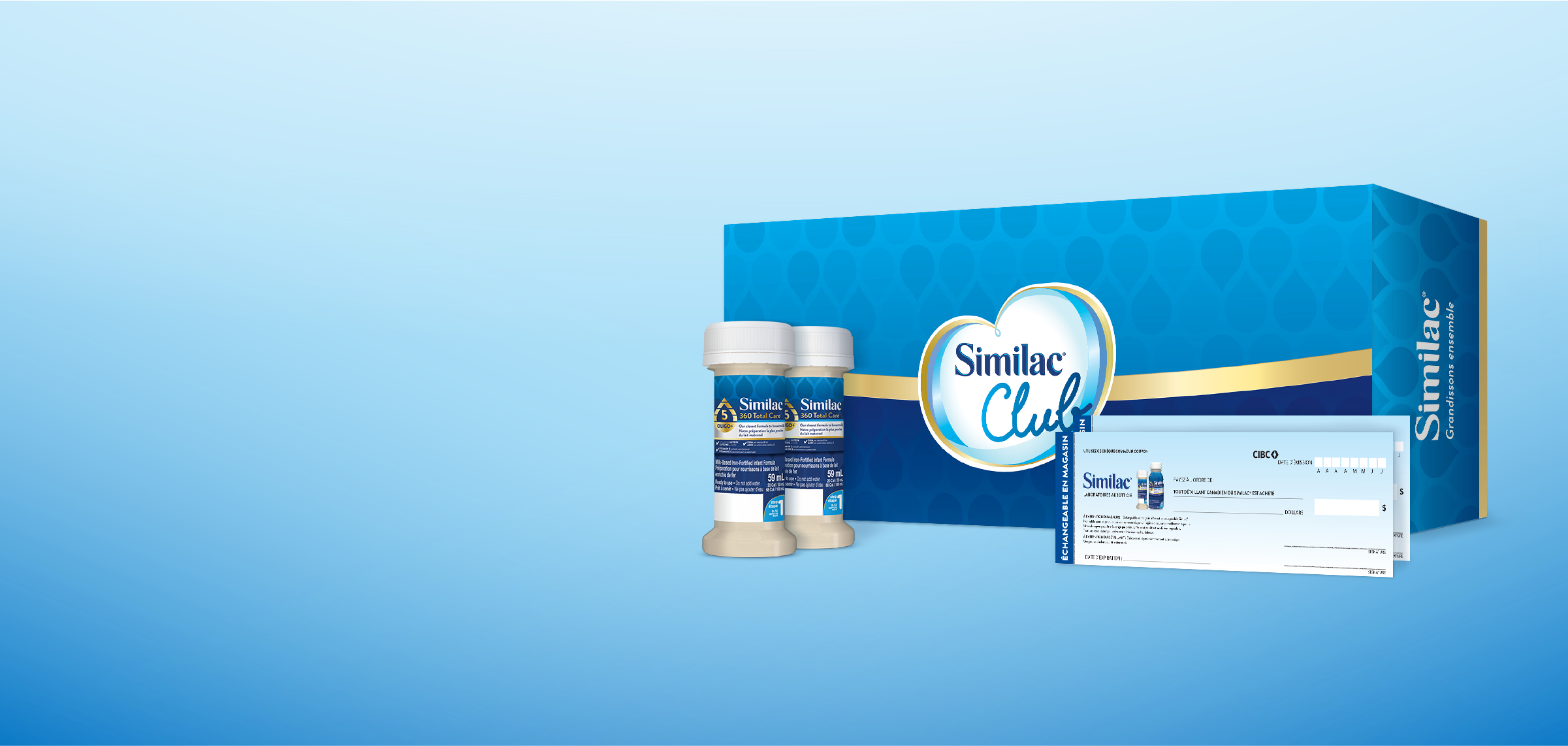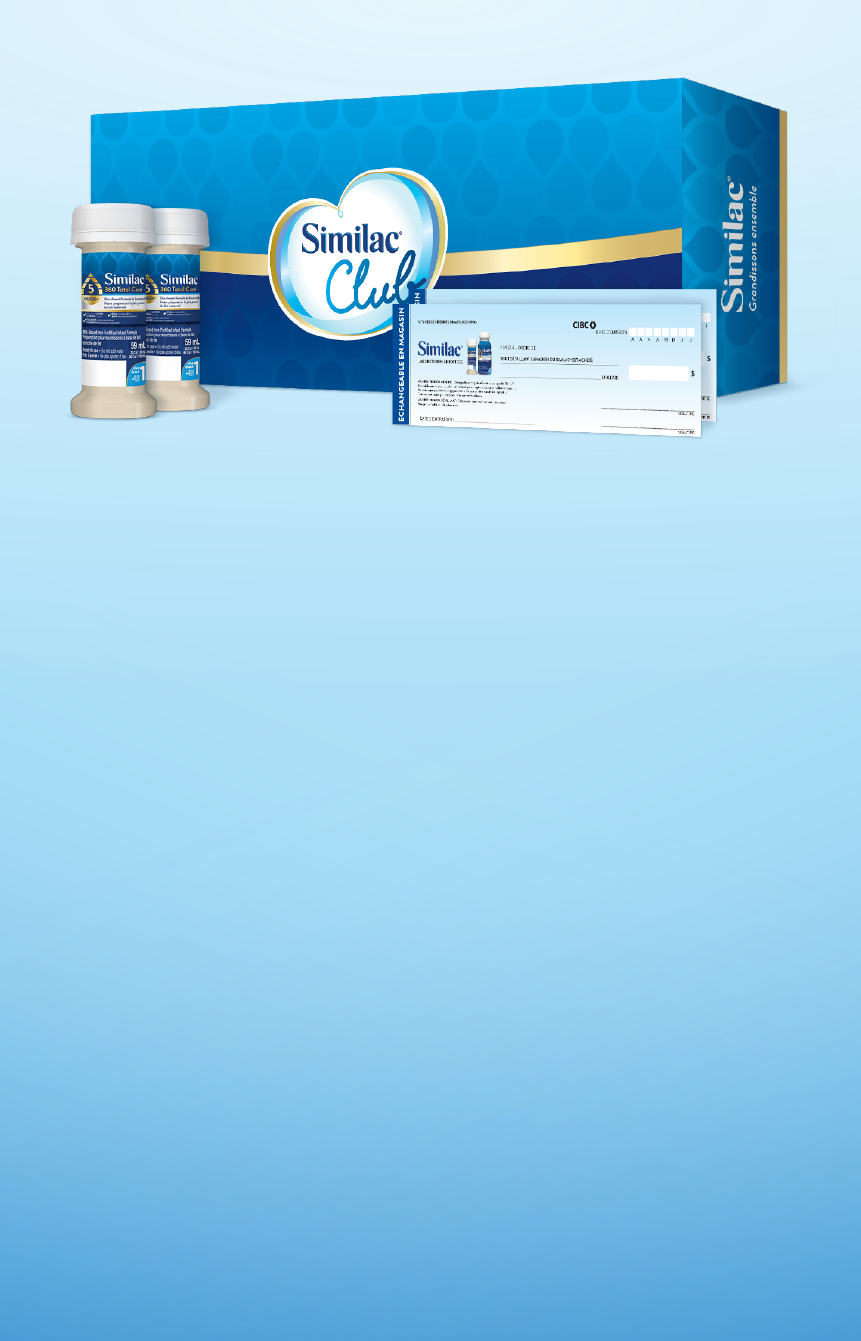SIMILAC PRO-ADVANCE® STEP 1


Discover our closest formula to breast milk: Similac Pro-Advance®
Similac Pro-Advance® contains 2’-FL†; 2’-FL is a unique component of breast milk that helps build baby’s immune system.‡ Parents who fed their babies Similac® with 2’-FL† reported 3 TIMES FEWER respiratory infections.1,2§
This non-GMO* formula also contains an exclusive blend of DHA, lutein and natural vitamin E††, making it our most advanced and closest formula to breast milk.
With Similac Pro-Advance®, you can trust that you are giving your baby the nutrients they need to grow.
Immune Support Innovation: 2'-FL†
Breast milk contains many protective factors that help build the baby’s immune system. These include complex carbohydrates called human milk oligosaccharides (HMOs).3-6
HMOs are the third most abundant component of breast milk (excluding water).7,8
About 70% of the immune system is found in the digestive tract9, so maintaining a favourable environment for good bacteria in the gut can help babies build strong digestive and immune systems.7 HMOs, like 2'-FL, in breast milk can affect the baby's immune system in various ways:7
FEED THE GOOD
BACTERIA
IN BABY’S GUT
(PREBIOTICS)
PROTECT AGAINST
HARMFUL BACTERIA
IN THE GUT
SUPPORT BABY’S
DEVELOPING
IMMUNE
SYSTEM
Nutrition beyond DHA
Because the first year of life is a critical time for your baby’s brain and eye development.
Naturally found in breast milk, DHA, an Omega-3 fat, supports the normal physical development of the baby’s brain and eyes.
DHA is prone to damage from oxidation — this is why breast milk also contains antioxidants, such as lutein and vitamin E, which help protect fats in body tissues, like DHA, from oxidation.
When your baby starts eating foods, she will get DHA from fatty fish such as salmon, sardines, and tuna, as well as Omega-3 eggs.
Lutein is an antioxidant found in breast milk and is concentrated in the baby’s brain and eyes. Similac Pro-Advance® contains added lutein.¥
Lutein comes from solid foods like leafy greens, corn, and eggs. So until your baby starts solid foods, she can get lutein from breast milk or Similac Pro-Advance®.¥
Vitamin E is an antioxidant found in breast milk, but not all vitamin E is the same. One of the great things about Similac Pro-Advance® is that it uses natural vitamin E.¶ This is the most abundant type found in breast milk and the infant brain.
You can only get natural vitamin E¶ from foods. Rich food sources include dark leafy greens, eggs, fish, nuts, and seeds.
† Not derived from human milk; identical structure to 2'-FL found in breast milk.
‡ Post-hoc analysis. Doctor-assessed adverse events.
§ RRR-alpha-tocopherol, the most bioactive form of vitamin E.
* Ingredients not genetically engineered.
¶ Similar to other infant formulas.
¥ Excluding inherent sources.
1. Marriage BJ, Buck RH, Goehring KC et al. J Pediatr Gastroenterol Nutr 2015;61:649–58. 2. Reverri EJ, Devitt AA, Kajzer JA et al. Nutrients 2018;10(10):1346. 3. Field CJ. J Nutr 2005;135(1):1–4. 4. Iyengar SR, Walker WA. J Pediatr Gastroenterol Nutr 2012;55(6):641-7. 5. Gregory KE, Walker WA. Curr Pediatr Rep 2013;1(4):10. 6. Palmeira P, Carneiro-Sampaio M. Rev Assoc Med Bras (1992). 2016;62(6):584-93. 7. Jantscher-Krenn E., Bode L. Minerva Pediatr 2012;64:83–99. 8. Zivkovic AM, German JB, Lebrilla CB et al. Proc Natl Acad Sci 2011;108(Suppl. 1):4653-8. 9. Perdigón G, Fuller R, Raya R. Curr Issues Intest Microbiol 2001;2(1):27-42.
PRODUCT FORMATS AVAILABLE
16 x 235 mL, ready to use
24 x 59 mL, ready to use
859 g, powder
584g, powder
Temporarily unavailable
6 x 59 mL, ready to use
Temporarily unavailable
Features of Similac® products
NUTRITION INFORMATION
VITAMINS & MINERALS
(per 100 mL standard dilution)
Vitamin A (IU)190
Vitamin D (IU)40
Vitamin E (IU)2.7
Vitamin K (mg)0.009
Vitamin C (mg)10
Thiamine (mg)0.08
Riboflavin (mg)0.11
Niacin (mg)0.72
Vitamin B6 (mg)0.041
Folic Acid (mg)0.0069
Vitamin B12 (mg)0.00017
Pantothenic Acid (mg)0.30
Biotin (mg)0.0025
Choline (mg)10
Sodium (mg)18
Potassium (mg)80
Chloride (mg)44
Calcium (mg)53
Phosphorus (mg)29
Magnesium (mg)5.2
Iron (mg)1.2
Zinc (mg)0.5
Iodine (mg)0.013
Copper (mg)0.0053
Manganese (mg)0.0048
Selenium (mg)0.0013
INGREDIENTS
Lactose, Dry or evaporated skim milk, High oleic safflower oil, Soy oil, Coconut oil, Whey protein concentrate, Fructooligosaccharides, Whey protein hydrolysate, M. alpina oil (source of ARA), 2’-fucosyllactose, C. cohnii oil (source of DHA), Soy lecithin, L-tryptophan, Taurine, M-inositol, Cytidine 5’-monophosphate, Ascorbyl palmitate, Disodium guanosine 5’-monophosphate, Disodium uridine 5’-monophosphate, Adenosine 5’-monophosphate, L-carnitine, Mixed tocopherols, Lutein, Minerals (potassium citrate, calcium carbonate, tricalcium phosphate, potassium hydroxide, magnesium chloride, salt, ferrous sulphate, zinc sulphate, cupric sulphate, potassium chloride, manganese sulphate, sodium selenite, potassium iodide), Vitamins (ascorbic acid, choline bitartrate, D-alpha tocopheryl acetate, niacinamide, calcium D-pantothenate, vitamin A palmitate, thiamine hydrochloride, riboflavin, pyridoxine hydrochloride, folic acid, beta-carotene, phylloquinone, D-biotin, vitamin D3, cyanocobalamin). Contains: Milk, Soy.
Refer to label for most accurate information. Nutritional composition and ingredients may vary slightly between formats.



